
North & East coast Route
This is a route designed by us for your motorhome camping in Northeast Scotland. We're here to help and give advice on where to stay overnight using our wild camp spots, what to see, and where to eat.
In this route, all the places we mention have been visited by us in a motorhome over the years, on more than one occasion. See our tried-and-tested route so you can make the most out of your Northeast trip!
.png)
Starting Point: Perth to Scone Palace
From our base in Perth, head to Scone Palace which is only 10 minutes away, Scone Palace is where the Kings of Scotland used to be crowned and is the rightful home of the Stone of Destiny, The Stone of Scone was last used at the coronation of HM Queen Elizabeth II, Robert the Bruce was crowned here in 1306.
.png)
Scone Palace to Dundee
From Scone travel to Dundee via Forfar, popping into Glamis Castle on the way. The Medieval Glamis Castle was the home of the Queen mother, and this is where the current queen played in the Gardens as a child.
Legends and myths have grown around the castle, like King Malcolm II was said to have been murdered here in the 11th century, lady Janet Douglas the widow of Lord Glamis, was burned at the stake as a witch in 1540 by James V. It is also said there is a secret room where a nobleman played cards with the devil himself.
.png)
From Glamis, it is a short drive to Forfar where you can treat yourself to a famous Forfar Bridie from the Bridie shop who have been baking bridies since 1893. They are said "to have been 'invented' by a Forfar baker in the 1850s". The name may refer to the fact that bridies were normally seen on wedding menus in the area.
From Forfar, travel with your campervan to Dundee’s waterfront where Captain Scott’s ship Discovery has been restored. There is also a museum where you can board and walk around the ship. The ship was launched in 1901 and was designed for Artic Ice Exploration. The expedition’s zoologist was to die with Scott on the fateful journey to the pole in 1912.
.png)
When camping in North East Scotland, go to St Andrews if you’re interested in golfing. It is only a 30-minute drive from Dundee, and overnight parking is allowed close to The Old course right beside the beach, (Ask us for Directions)
.png)
Dundee to Arbroath
From Dundee travel to Arbroat, passing Carnoustie on the way. Arbroath used to be an important fishing town on the east coast, so make sure you don’t leave Arbroath without sampling the world-famous Arbroath Smokey. Arbroath smokies are prepared using traditional methods dating back to the late 1800s.
The fish are first soaked in salt overnight. They are then tied in pairs using a hemp type twine and left to dry overnight. After they have been salted, tied and then dried, they are hung over a triangular length of wood to smoke. A "kiln stick" fits between the pair of smokies, one on either side. The kiln sticks are then used to hang the fish in a wooden container which contains a hardwood fire. They are absolutely delicious!
.png)
From Arbroath, North East camping is available overnight provided you arrive after 6pm and leave the next morning before 10 am. Ignore the no overnight camping signs as this is only to stop gypsies from setting up camp. Go through the farm until you come to the car park at the beach.
.png)
Arbroath to Aberdeen
From here, head up the coast towards Aberdeen. If you are feeling hungry, then stop in past Stonehaven and visit the Bay Fish and Chip shop on the promenade. The fish is freshly caught and cooked to order. Bay Fish and Chip have also been awarded the UK No 1 Independent takeaway in 2013.
.png)
Dunnottar Castle
Mary Queen of Scots, the Marquis of Montrose, and the future King Charles II, all visited Dunnottar Castle. However, very famously though, it was at Dunnottar Castle that a very small garrison of men held out against the mighty Cromwell’s army for over eight months and saved the Scottish Crown Jewels from English hands. The ‘Honours of Scotland’ The Crown, sceptre, and sword are now on show in Edinburgh Castle.
Dunnottar Castle was originally the ancestral home of the Earls Marischal who was once one of the most powerful families in Scotland. The last Earl of the castle was charged and convicted of treason for his part in the Jacobite rising in 1715, and as a result his estates, including Dunnottar Castle, were seized by the English government.
Aberdeen is known locally as the silver city, as almost all of the buildings are built using grey or silver granite stone. From Aberdeen, take the A947 up to Macduff and Banff and stop by the Srathisla Distillery at Keith.
There is a nice wild camp spot beside lovely beach then along the Moray Firth Coastline. Wild camping next to the sea is available near Buck Pool where you can go overnight right next to a colony of grey seals. The photo below is some of the seals at Buck Pool.
.png)
.png)
An overnight stop is available close to the beach near Findochty. The exact location is on the Sat Nav supplied with the Motorhome.
Aberdeen to Inverness
Head along the coastal road towards Inverness and just past Nairn ( Wild camp here nice spot next to beach), head for Fort George.
Fort George
After the defeat at Culloden of Bonnie Prince Charlie in 1746, the then king George II created the ultimate defence against any further Jacobite unrest. Fort George was the result, which is the mightiest artillery fortification in Britain.
If not Europe, its garrison buildings, artillery defences bristling with cannon, and superb collection of arms – including bayoneted muskets, pikes, swords and ammunition pouches – provide a fascinating insight into 18th century military life. Wild camp here next to the Fort.
.png)
Culloden Battlefield
Before reaching Inverness, a visit to the Culloden battlefield and Museum is a must. The Jacobite army was made up mainly of Scottish Highlanders, as well as a large number of Lowland Scots. There was also a small detachment of Englishmen from the Manchester Regiment.
The Jacobite army were supported and supplied by France and French and Irish units loyal to France were also part of the Jacobite army. The government army was mostly made up of English soldiers, along with a fair number of Scottish Lowlanders and even some Highlanders, a battalion of Northern Irish and a few Hessians from Germany.
The battle on Culloden Moor was a blood bath and lasted only an hour. Following an unsuccessful famous Highland charge against the English lines, the Jacobite army was heavily defeated and driven off the battlefield.
Inverness to Dornoch
From Inverness, take the A9 coast road towards Dornoch. The Royal Burgh of Dornoch is a historic small town on the edge of the Dornoch Firth. It is the designated National Scenic Area in the Highlands of Scotland where the local pipe band play in summer every Saturday evening. Wild camping on beach at Golspie.
Dunrobin Castle
Dunrobin Castle is near Golspie and is the most northerly of Scotland's great Castles and dates back to around the 1300s. The gardens were laid out in 1850 by the architect Sir Charles Barry. The inspiration for the castle came from the Palace of Versailles in Paris. The gardens to this day are still laid out as they were planted in the 1300s.
.png)
From Dornoch, the road follows close to (wild camping available at the Lybster harbour) the coast up to Wick from here take the A99 to John O Groats which is the most northerly part of mainland UK. At the Harbour, watch for the small fishing boats coming in where you can buy freshly caught crabs, lobsters, scallops, etc. direct off the boat.
We have to say we were disappointed when we last visited John O Groats (2014) as the local hotel was boarded up and the place looked run down. However, we believe the Area has now (2018) been spruced up.
.png)
Ornkey
Ferries run between John O Groats and the Orkney Isles. You can go over as a foot passenger and tour the Island on a tour bus or take the Motorhome over on the Ferry.
Orkney was a base of a Royal Navy detachment at Scapa Flow with easy access to the North Sea. This base played a major role in World War One and Two. After the surrender of German forces in 1918, the whole German High Seas Fleet sailed in its entirety to Scapa Flow. The German sailors scuttled all the ships, and the remaining wrecks are now a famous place for divers exploring it for leisure.
Only a month into World War II, a German U-boat sank the Royal Navy Ship, HMS Royal Oak in Scapa Flow. As a result, Winston Churchill organised the building of barriers between the islands to stop German U Boats from entering the bay. The barriers are wide enough to drive on creating causeways, so now travellers can drive from island to island, using the now aptly named Churchill Barriers.
The causeways were constructed using Italian prisoners of war. These prisoners also constructed the fantastic ornate Italian Chapel using waste materials, which is well worth visiting.
.png)
Skara Brae
Skara Brae is a well reserved Neolithic Village and is the best-preserved Neolithic settlement in Europe. It was believed to have been inhabited from around 3100 BC. Also, in the area and from around the same period are the standing stones of Stenness, the ring of Brodgar, Maeshowe passage grave, along with many other standing stones.
.png)
Dunnet Head Lighthouse
From John O Groats, follow the A836 to Thurso take a small detour up to Dunnet Head Lighthouse, which marks the most northerly point of the Scottish mainland. From here, only 6.75 miles across the Pentland Firth, is the nearest point of the Orkney Islands, which is only 2.35 miles North of John O'Groats.
The Queen Mother has visited the lighthouse on many occasions, and the last time was in October 1979, where the head lighthouse keeper, Mr. Malcolm, gave her a guided tour of the station. After the tour, the Queen Mother had tea with Mr. Malcolm and his wife. Wild camping near the lighthouse here.
.png)
Dounray Nuclear Power Station
Stay on the A836, which takes you along the North Coast of Scotland. Past Wick is the Dounray Nuclear power station, which was used by the United Kingdom Atomic Energy Authority and the Ministry of Defence.
The site is well-known for the five nuclear reactors stationed there. Three of them are operated by the Atomic Energy Authority and two owned by the Ministry of Defence. The site is in the process of decommissioning and visitors are welcome.
Kyle of Tounge
The road crosses a long sweeping causeway and bridge over the Kyle of Tounge, which was built in 1971. Up until then travellers used to cross by ferry, which stopped in 1956, and meant travellers had a long 10-mile drive, along a narrow road which runs around the head of the Kyle.
As can be seen in the photo below, the far northern part of Scotland is very remote with mainly flat moorland, unlike the Highlands and Western Coast. Wild camping here near Tounge.
.png)
From Tongue after crossing the causeway turn right for Talmine you can park on the bay or up on roughish ground right by the breakwater in the picture.
.png)
By Durness and Farraid Head, we came across this place by accident. At first, we thought it was a bunch of hippies living in the old army barracks getting away from the rest of the world.
However, it is a fascinating craft village in ex-Ministry of Défense buildings, surrounded by the most beautiful windswept beaches, fantastic bookstore, cafe, pottery, horn-crafts, chocolate factory, which was featured on dragons Den, local artists etc. Not what you would expect to find in one of the most remote places in Europe!
Durness wild camp here at gorgeous spot next to deserted beach.
.png)
Cape Wrath
From near Durness, a ferry goes across to Cape Wrath, which is a very well worthwhile trip in fine weather. First, the small boat takes you across the estuary and then you are transferred into a bit of a shabby old minibus 11 miles across MOD ground and to the lighthouse. Sometimes the RAF are practising their bombing skills offshore, and the area gets shut off at Cape Wrath and you may have to wait for the road to open.
The first photo is the wild campsite on the roadside after Durness, just where you go down to the ferry to Cape Wrath. The other shows the boat which takes you across the estuary.
.png)
.png)
.png)
From Durness, start heading South on the A838 down the western coast for Ullapool (This road is extremely remote) and you will notice the Scenery changes very dramatically from flat moorlands to high rugged mountains with forests and rivers.
Clan Mackay
Turn off at Laxford Bridge (wild camp here on shore of loch) on the A894 to the crofting village of Scourie, which was the stronghold of the Clan Mackay. This area is famous for its location, untouched by modern developments, and is an area of remote rugged beauty. The village is apparently the only one in the world, where depending on the season of the year, you can spot the Black Throated diver birds, palm trees, from the shore of the bay.
Assynt
Assynt has a unique mixture of mountains, glens, and moorlands dotted with lochans. This area is also famous for its brown trout fishing and the peaks of Mountains such as Ben Sytack, Foinaven, Quigag, Suliven, and Ben More. Assynt is the ideal place to relax away from the stresses of modern living.
.png)
IMORTANT: The B869 road through Drumbeg on our Northern Scotland Motorhome route is not suitable for motorhomes. DO NOT USE.
Kylesku
Stop at Kylesku Bridge where a memorial on the north side marked the 50th anniversary of the X11th Submarine Flotilla who used this area for a base in 1943. This was where the Unit of X – craft miniature submarines trained around the waters of Kylesku.
This is where they setoff for Norway to attack the famous German battleship Tirpitz, which was very successful as they crippled the German battleship and stopped her from leaving port.
In the Bar at the Kylesku Hotel, they have a presentation covering the story in more detail. So, pop in for a nice bar snack and enjoy reading and viewing the many photographs from the time.
The memorial remembers those 39 men and the locals of the area who "knew so much and talked so little.” Remote wild camping in the hills here.
.png)
Ardveck Castle
Stop for the evening and park overnight (wild Camp) by Ardveck Castle ruins. This is a fantastic spot with views over Loch Assyynt with the Mountains in the background.
This castle was owned by the Clan MacLeod and is thought to have been built around 1590. The MacLeod also owned Assynt and the estates and land all around from the 13th century onwards. There is a historical tale about the castle that on 30 April in 1650, the Marquis of Montrose was captured and held at the castle before being marched to Edinburgh for trial and execution.
Montrose sought sanctuary at the castle with Neil MacLeod after being defeated at the battle of Carbis dale by government troops loyal to Charles 1. However, Neil MacLeod was absent from the Castle on business, and it is rumoured that his wife, Christine, lured Montrose into the castle dungeons and sent for the Government troops.
Montrose was taken to Edinburgh, where he was executed by hanging, drawing and quartering, which was the traditional method used for traitors at that time.
.png)
.png)
Continue from here on the A835 to Ullapool. From Ullapool and down the west coast, please follow our west coast route, which covers Ullapool, Applecross, Summer Isles, Gairloch, Isle of Skye, Fort William, Glencoe, Loch Fynne, Stirling, and Cairngorms.
Make the Most Out of Your Camping in North East Scotland with Scottish Tourer
If you're looking for a distinctive way to explore Scotland, consider renting a campervan from Scottish Tourer. With a variety of vehicles to choose from, you can relish the freedom of the open road and travel at your own pace.
Whether you desire to tour the breathtaking Scottish countryside, visit historic castles, or try out the local whiskey, a Scottish Tourer campervan is the perfect solution. With comfortable sleeping accommodations, cooking amenities, and all the necessary conveniences, you can enjoy the ultimate camping in North East Scotland
Contact Scottish Tourer now to discover more our campervan rentals and start planning your Scottish road trip.
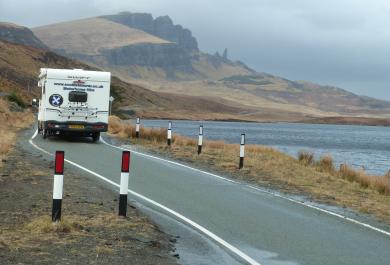
Driving Routes
Motorhome Hire Scotland - Itinerary Guide
Scotland is a very beautiful country, rich in culture and history...
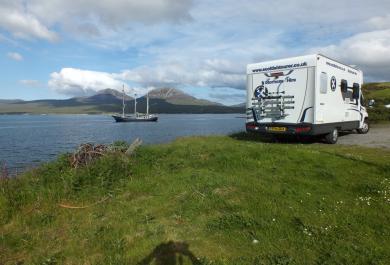
West Coast route
We are the only company who have all brand new very high specification motorhomes, however and more important than that is the service and advice of where to go and also where not to go from experienced expert local motor homers.
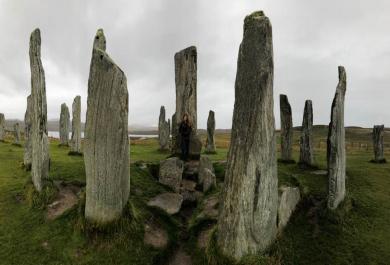
Outer Hebrides Motorhome Route
Our Outer Hebrides motorhome route will take around 10 to 14 day to complete, Only 30 miles from the North West coast of Scotland are the Islands of the Outer Hebrides.
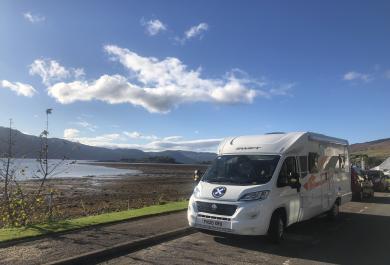
West Coast Route with Children.
Trying to strike a balnce of keeping the kids amused and still enjoying a holiday thats both active and intresting is not always easy, our west coast route is based on our own experiance's with some suggested stops that my children have enjoyed along the way.
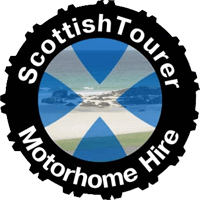
 Call Us
Call Us Email Us
Email Us Add to Contacts
Add to Contacts Latest Review
Latest Review Book Now
Book Now